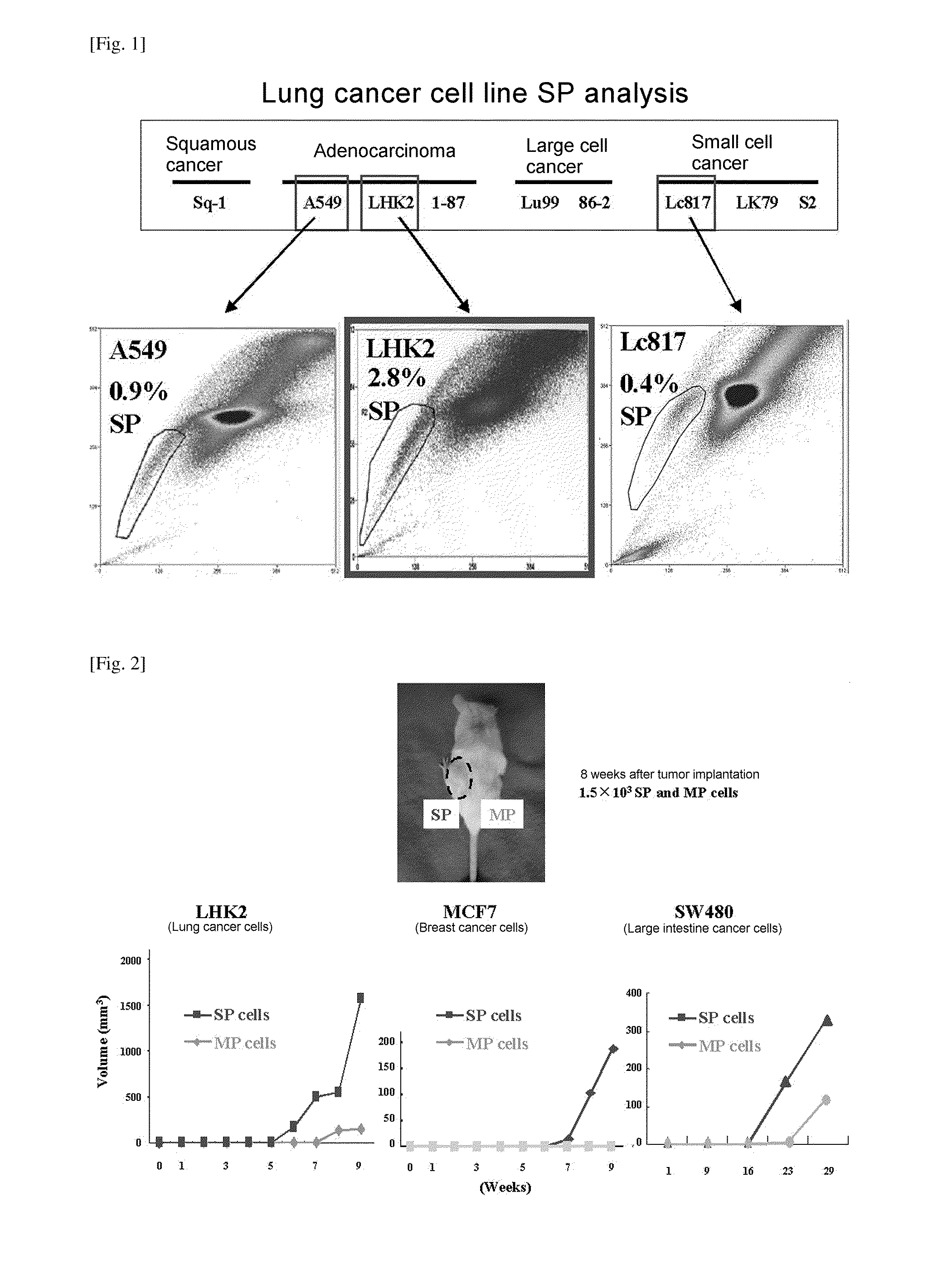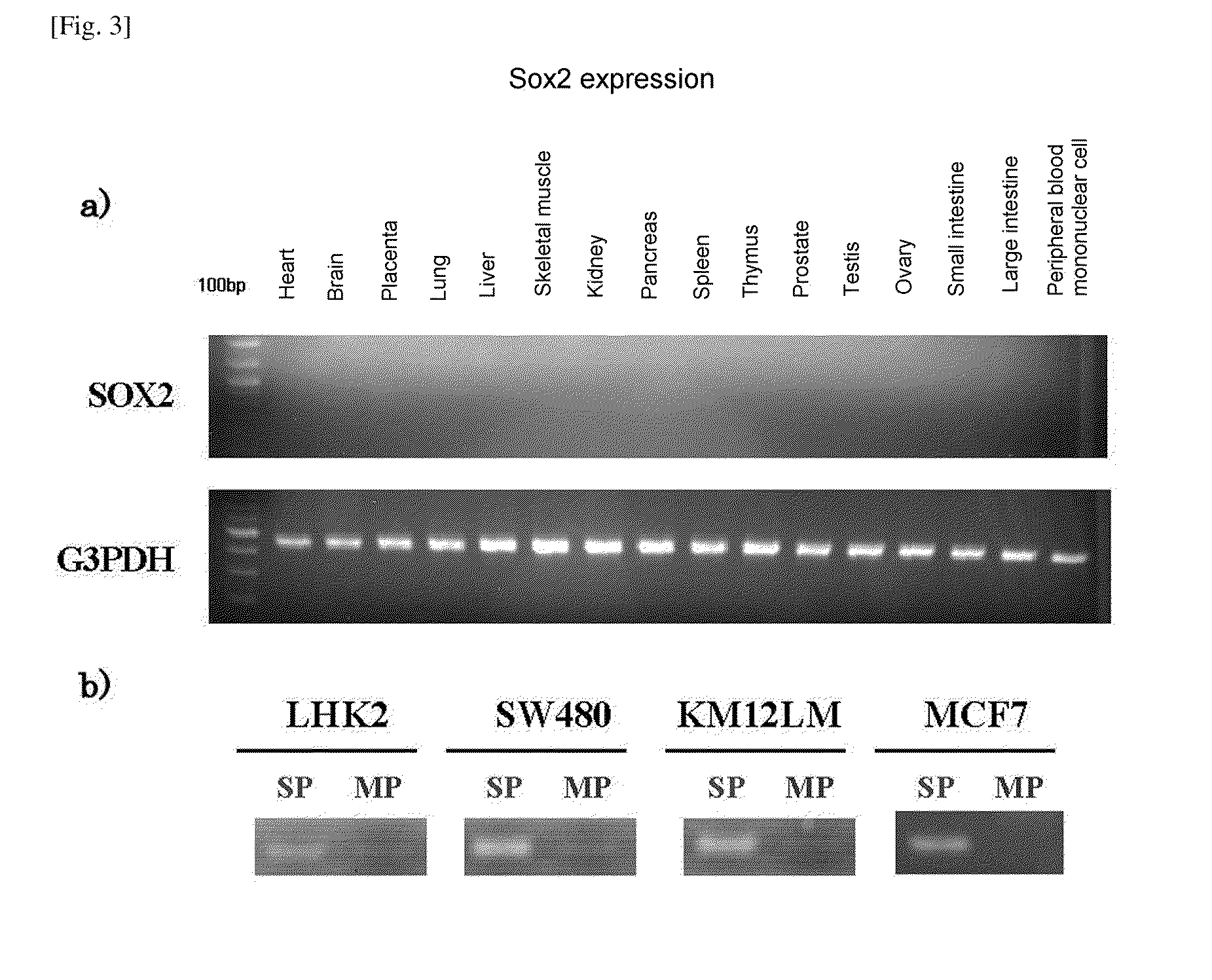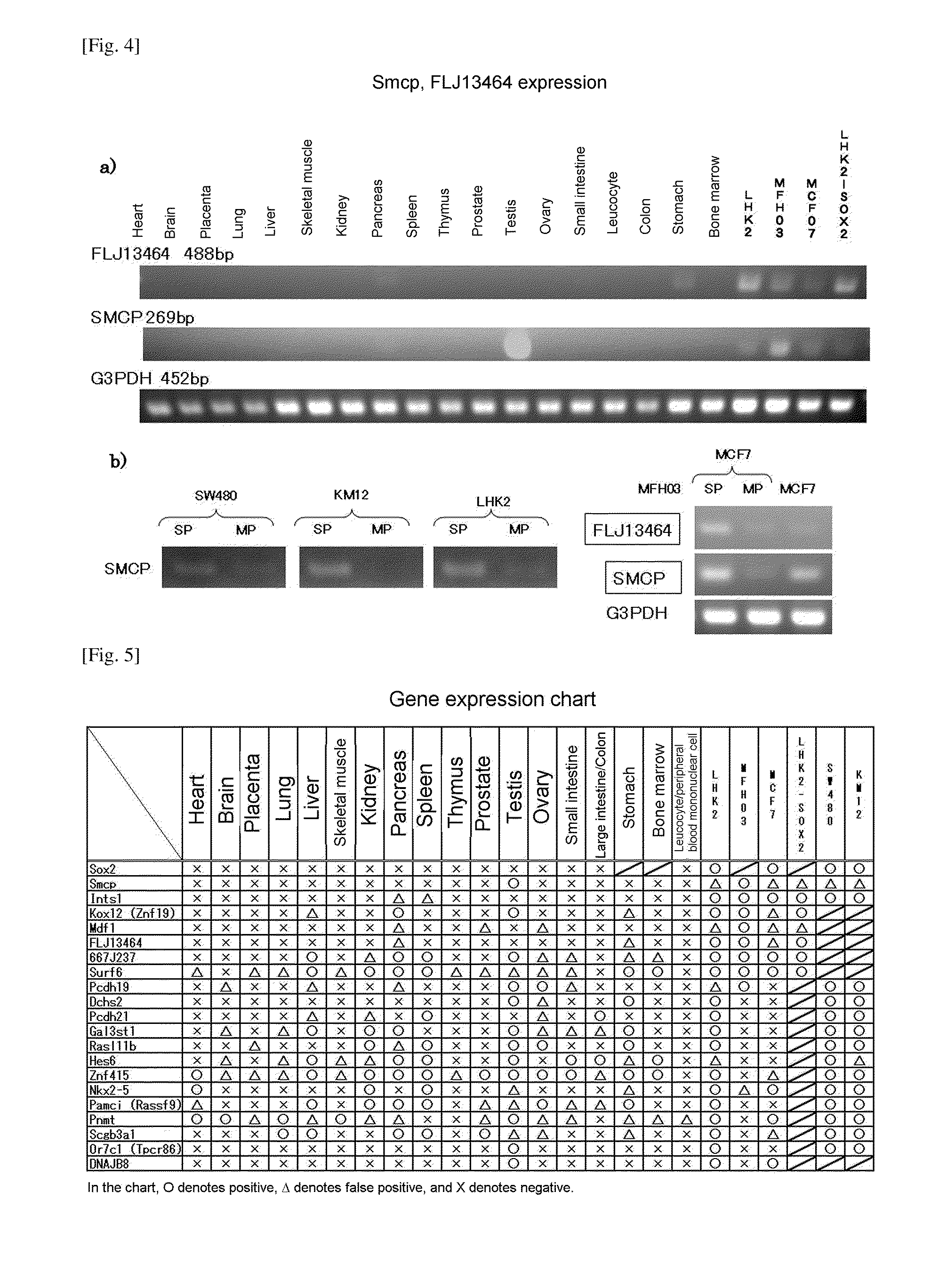Molecular marker for cancer stem cell
a cancer stem cell and molecular marker technology, applied in the direction of immunoglobulins, peptides, drugs against animals/humans, etc., can solve the problems of difficult to specifically recognize and treat cancer stem cells, low proportion of cancer stem cells in tumor tissue, etc., and achieve tumorigenicity high relevance, discrimination of cancer stem cells, and versatile molecular markers for cancer stem cells
- Summary
- Abstract
- Description
- Claims
- Application Information
AI Technical Summary
Benefits of technology
Problems solved by technology
Method used
Image
Examples
example 1
Experimental Example 1
Isolation of Cancer Cell Sp Fraction
a) Preparation of Reagent
[0124]A 5% anti-fetal bovine serum (FCS)-containing DMEM medium was prepared, and warmed to 37° C. 50 mM Verapamil was prepared, and diluted to 5 mM with 5% FCS+DMEM. Hoechst 33342 was adjusted to 250 μg / mL with 5% FCS+DMEM. DNAseI was adjusted to 1 mg / mL with DDW, and subjected to filtration sterilization using a 0.2 μm filter.
b) Preparation of Cells for Flow Cytometry (FACS)
[0125]Cells were suspended in 4 mL of 5% FCS+DMEM, and the number of cells was counted. Furthermore, the cell concentration was adjusted to 1×106 counts / mL by adding 5% FCS+DMEM, and 1 mL was sampled in a Falcon tube for verapamil (+). The verapamil (+) cells and the remaining cells (for verapamil (−)) were incubated in a water bath at 37° C. for 10 minutes. After incubation, a verapamil solution was added to the verapamil (+) such that the final concentration of verapamil became 50 to 75 μM, and a Hoechst 33342 solution was then...
example 2
Experimental Example 2
Tumorigenicity Experiment
[0130]Tumorigenicity was confirmed by inoculating mice with fractioned SP cells and MP cells using each of LHK2, MCF7, and SW480 cell lines by the same method as in Experimental Example 1. The same number of SP cells and MP cells were suspended in 100 μl of 1×PBS on ice and mixed with 100 μl of Matrigel. NOD / SCID mice (obtained from Oriental Kobo Co., Ltd.) were inoculated subcutaneously to the dorsal skin with 100 μl of a cell-Matrigel mixed liquid at 1500 cells per site of each of SP and MP cells; when a tumor started to form, the lengths of the longest diameter and the shortest diameter were measured, and the volume was calculated as approximated to a spheroid and compared. The results are shown in FIG. 2.
[0131]From the results, it was found that, compared with MP cells, which did not form a tumor in even one mouse when implanted with 150 cells, the fractioned SP cells from LHK2 had much higher tumorigenicity such that 2 out of 5 mic...
example 3
Experimental Example 3
Confirmation of Expression by DNA Microarray
[0132]a) Extraction of mRNA
[0133]SP cells and MP cells isolated by the same method as in Experimental Example 1 were centrifuged at room temperature at 1500 rpm for 5 minutes, and supernatant was removed. Extraction of mRNA was carried out using an RNeasy Kit (Qiagen) in accordance with the kit protocol.
b) Amplification and Labeling of mRNA
[0134]The extracted mRNA was subjected to mRNA amplification using an RNA amplification kit obtained from Sigma Genosys, and the amplified mRNA was subjected to labeling using an mRNA labeling kit obtained from Sigma Genosys so that material extracted from the SP fraction was labeled with Cy5 and material extracted from the MP fraction was labeled with Cy3, and the dyes were exchanged, and that extracted from the SP fraction was labeled with Cy3 and that extracted from the MP fraction was labeled with Cy5.
c) Microarray
[0135]SP fraction-derived mRNA and MP fraction-derived mRNA, whic...
PUM
| Property | Measurement | Unit |
|---|---|---|
| Temperature | aaaaa | aaaaa |
| Temperature | aaaaa | aaaaa |
| Temperature | aaaaa | aaaaa |
Abstract
Description
Claims
Application Information
 Login to View More
Login to View More - R&D
- Intellectual Property
- Life Sciences
- Materials
- Tech Scout
- Unparalleled Data Quality
- Higher Quality Content
- 60% Fewer Hallucinations
Browse by: Latest US Patents, China's latest patents, Technical Efficacy Thesaurus, Application Domain, Technology Topic, Popular Technical Reports.
© 2025 PatSnap. All rights reserved.Legal|Privacy policy|Modern Slavery Act Transparency Statement|Sitemap|About US| Contact US: help@patsnap.com



